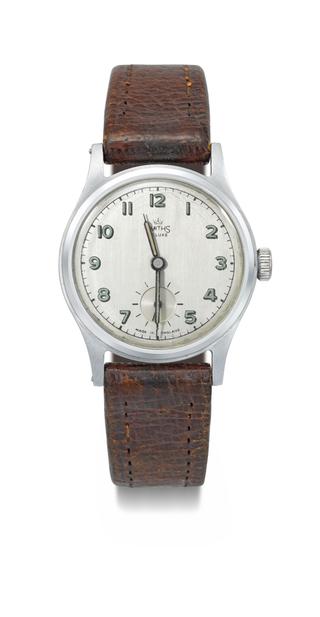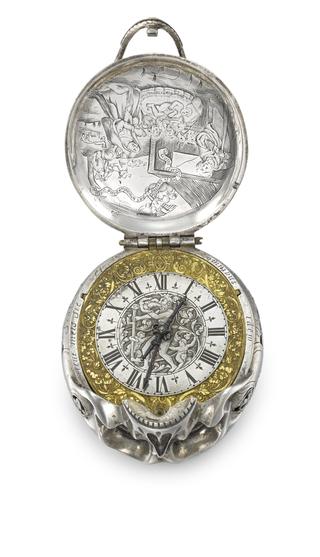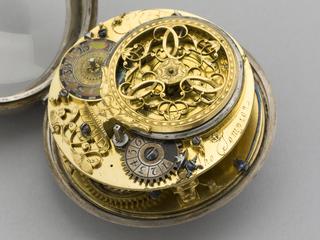
Lantern clock by Knifton

Lantern clock by Thomas Knifton, Cross Keys, Lothbury, London, England, 1640-1662. This clock is weight-driven and has an original verge escapement. The dial shows the hours and their quarters and a single hand shows the time. A locking-plate striking mechanism alllows the hours to be struck on the bell at the top and there is also an alarm.
Lantern clocks are a specific design of weight-driven clock, originating in England from around 1600. They were the most popular form of domestic clock in England until the development of pendulum clocks from 1657, which led to other desings such as the longcase and bracket clocks.
Details
- Category:
- Time Measurement
- Object Number:
- 1951-217 Pt1
- Materials:
- brass (copper, zinc alloy), steel (metal) and lead (metal)
- Measurements:
-
overall: 240 mm x 115 mm x 86 mm, 1.8kg
- type:
- lantern clock
- credit:
- Kempson, J.K.




